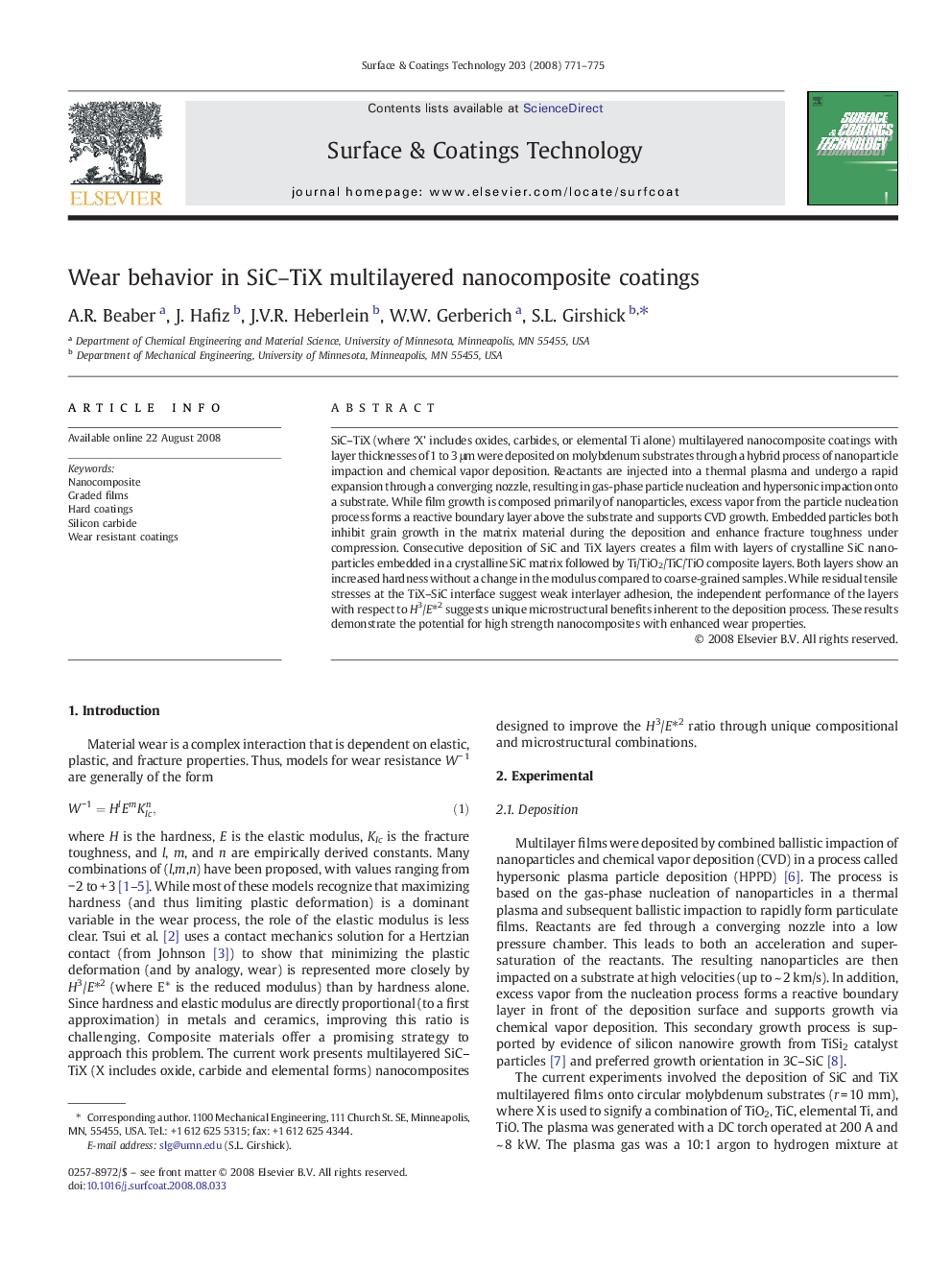| Article ID | Journal | Published Year | Pages | File Type |
|---|---|---|---|---|
| 1660041 | Surface and Coatings Technology | 2008 | 5 Pages |
SiC–TiX (where ‘X’ includes oxides, carbides, or elemental Ti alone) multilayered nanocomposite coatings with layer thicknesses of 1 to 3 μm were deposited on molybdenum substrates through a hybrid process of nanoparticle impaction and chemical vapor deposition. Reactants are injected into a thermal plasma and undergo a rapid expansion through a converging nozzle, resulting in gas-phase particle nucleation and hypersonic impaction onto a substrate. While film growth is composed primarily of nanoparticles, excess vapor from the particle nucleation process forms a reactive boundary layer above the substrate and supports CVD growth. Embedded particles both inhibit grain growth in the matrix material during the deposition and enhance fracture toughness under compression. Consecutive deposition of SiC and TiX layers creates a film with layers of crystalline SiC nanoparticles embedded in a crystalline SiC matrix followed by Ti/TiO2/TiC/TiO composite layers. Both layers show an increased hardness without a change in the modulus compared to coarse-grained samples. While residual tensile stresses at the TiX–SiC interface suggest weak interlayer adhesion, the independent performance of the layers with respect to H3/E⁎2 suggests unique microstructural benefits inherent to the deposition process. These results demonstrate the potential for high strength nanocomposites with enhanced wear properties.
